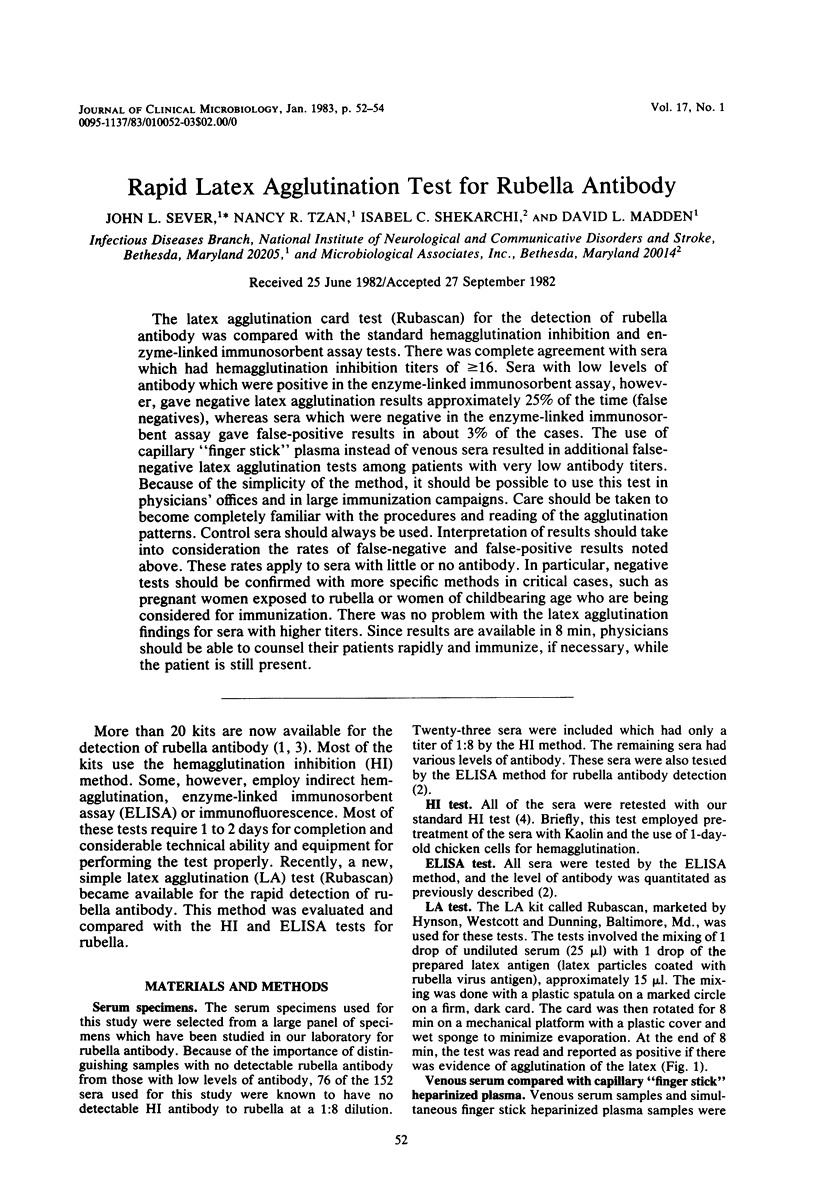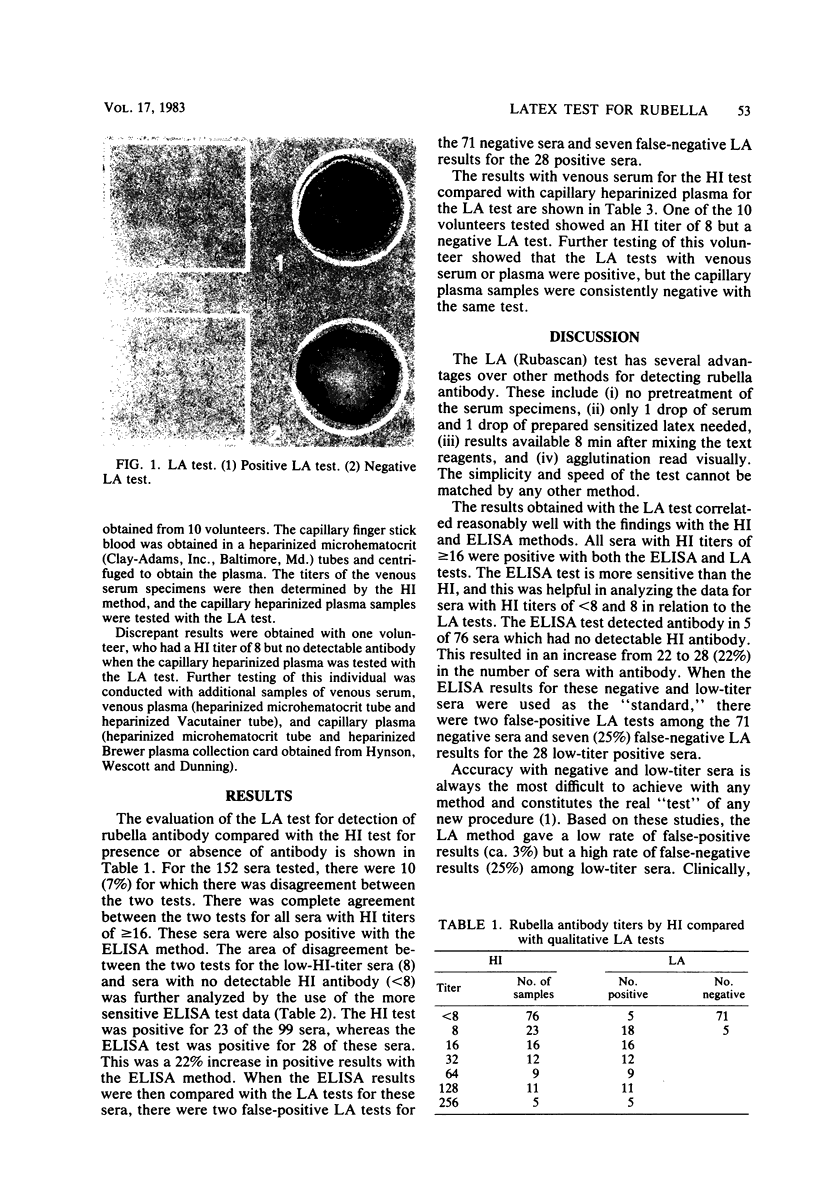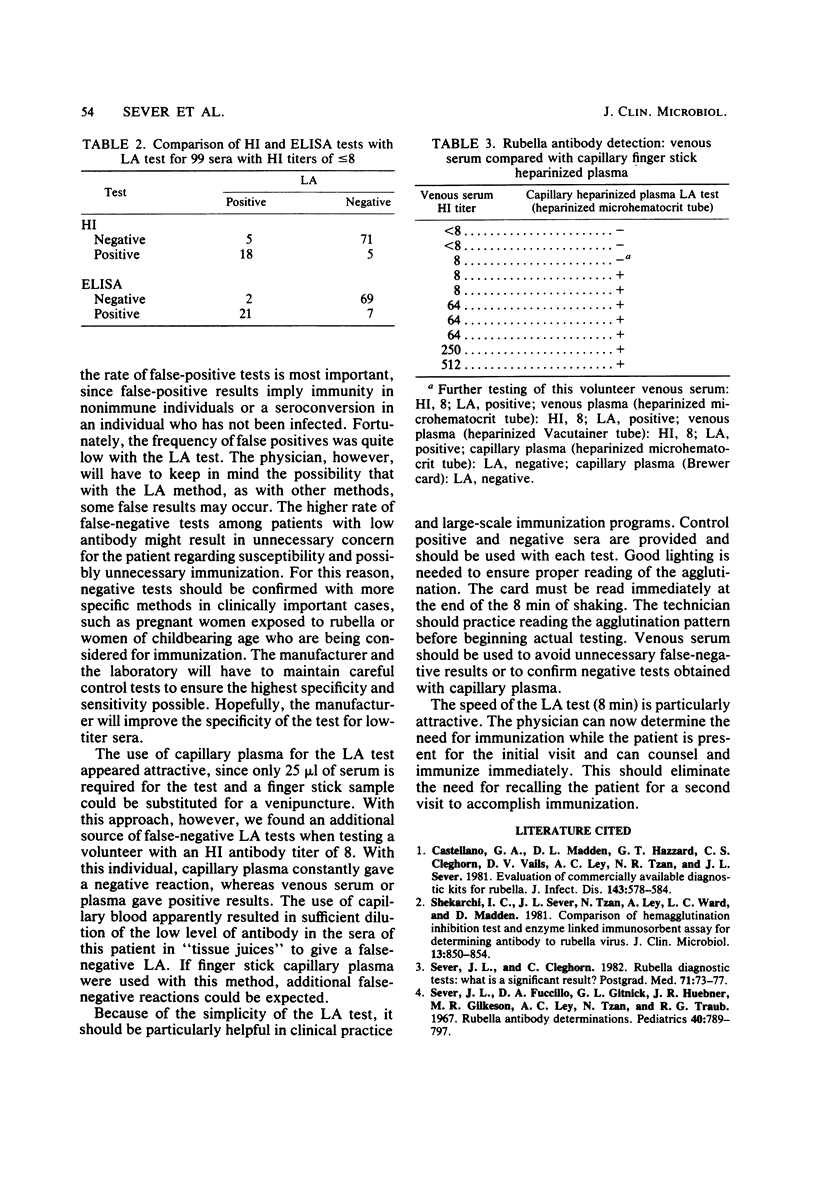Abstract
The latex agglutination card test (Rubascan) for the detection of rubella antibody was compared with the standard hemagglutination inhibition and enzyme-linked immunosorbent assay tests. There was complete agreement with sera which had hemagglutination inhibition titers of ≥16. Sera with low levels of antibody which were positive in the enzyme-linked immunosorbent assay, however, gave negative latex agglutination results approximately 25% of the time (false negatives), whereas sera which were negative in the enzyme-linked immunosorbent assay gave false-positive results in about 3% of the cases. The use of capillary “finger stick” plasma instead of venous sera resulted in additional false-negative latex agglutination tests among patients with very low antibody titers. Because of the simplicity of the method, it should be possible to use this test in physicians' offices and in large immunization campaigns. Care should be taken to become completely familiar with the procedures and reading of the agglutination patterns. Control sera should always be used. Interpretation of results should take into consideration the rates of false-negative and false-positive results noted above. These rates apply to sera with little or no antibody. In particular, negative tests should be confirmed with more specific methods in critical cases, such as pregnant women exposed to rubella or women of childbearing age who are being considered for immunization. There was no problem with the latex agglutination findings for sera with higher titers. Since results are available in 8 min, physicians should be able to counsel their patients rapidly and immunize, if necessary, while the patient is still present.
Full text
PDF


Images in this article
Selected References
These references are in PubMed. This may not be the complete list of references from this article.
- Castellano G. A., Madden D. L., Hazzard G. T., Cleghorn C. S., Vails D. V., Ley A. C., Tzan N. R., Sever J. L. Evaluation of commercially available diagnostic test kits for rubella. J Infect Dis. 1981 Apr;143(4):578–584. doi: 10.1093/infdis/143.4.578. [DOI] [PubMed] [Google Scholar]
- Sever J. L., Cleghorn C. Rubella diagnostic tests: what is a significant result? Postgrad Med. 1982 Mar;71(3):73–77. doi: 10.1080/00325481.1982.11716013. [DOI] [PubMed] [Google Scholar]
- Shekarchi I. C., Sever J. L., Tzan N., Ley A., Ward L. C., Madden D. Comparison of hemagglutination inhibition test and enzyme-linked immunosorbent assay for determining antibody to rubella virus. J Clin Microbiol. 1981 May;13(5):850–854. doi: 10.1128/jcm.13.5.850-854.1981. [DOI] [PMC free article] [PubMed] [Google Scholar]



